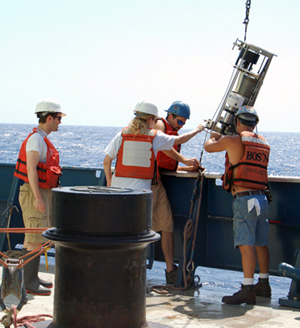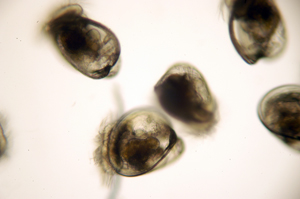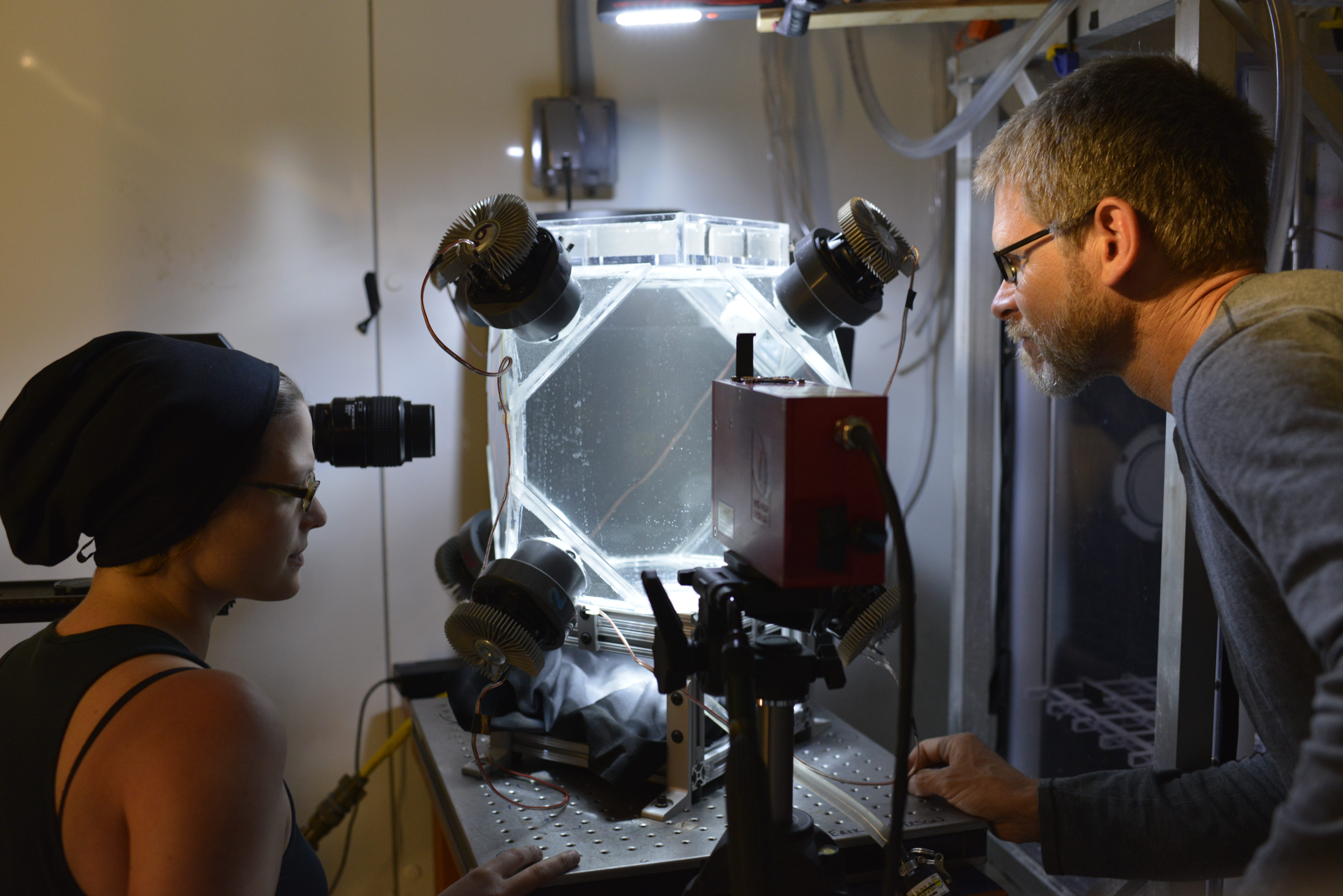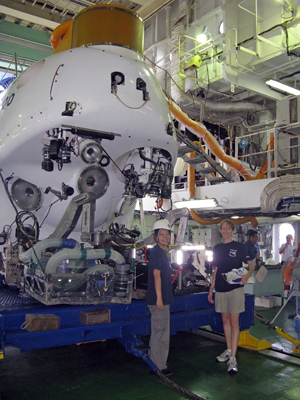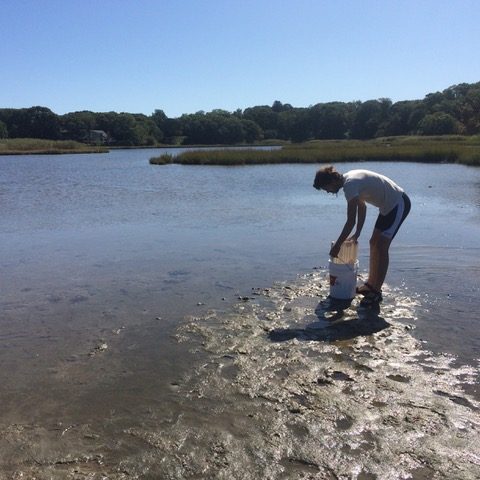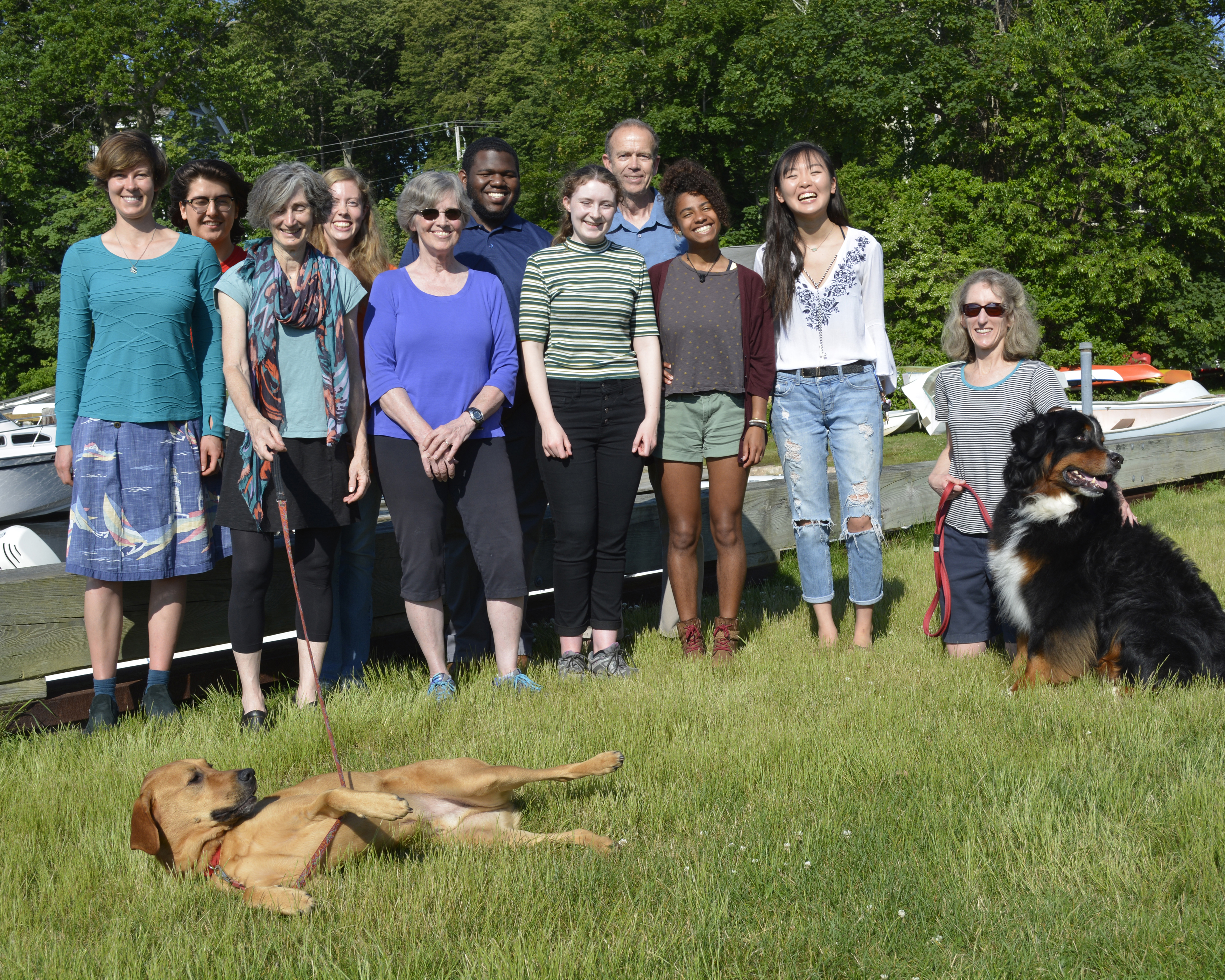Research
Dispersal and Colonization of Hydrothermal Vent Species
We investigate dispersal at deep-sea hydrothermal vents by sampling larvae in the plankton, conducting colonization experiments, and collaborating on bio-physical modeling projects. We are particularly interested in colonization and succession after seafloor eruptions, and the implications of these processes for community resilience. These studies provide insight into the effects of disturbance and help inform policy decisions on mining at vents. Recent projects include field studies on the East Pacific Rise, in the western Pacific, and in the Gulf of California. To see photos of vent larvae, check out our online guide to the identification of hydrothermal vent larvae.
Larval Behavior in Flow
The larvae of benthic invertebrates behave actively in ways that can alter their transport in oceanic currents and contribute to their settlement into suitable habitat on the seafloor. We study these behaviors in the laboratory, using high-speed video synchronously with Particle Image Velocimetry (PIV) to distinguish the larval behaviors from physical transport. Recent projects include investigations of larval swimming and diving responses to specific aspects of the turbulent flow structure.
Resilience in Vent Metacommunities
The species living at deep-sea hydrothermal vents persist despite living in isolated, scattered and frequently disturbed habitat. We are using metacommunity theory to understand the dynamics and diversity of these communities. The mathematical models focus on the seafloor volcanic eruptions that drive local extinctions followed by recolonization from nearby and far-away sources. The timing and spatial extent of eruption events are variable, and this variability is expected to drive changes in biodiversity at both the local and regional scales.
Larval Responses to Environmental Cues
Larvae exhibit behavioral responses to various environmental conditions, such as light and turbulence and chemical cues that influence their ability to settle into suitable benthic habitat. We use laboratory experiments to study larval swimming responses to potential settlement cues. Most recently, we have been investigating whether conditions associated with ocean acidification (e.g., low pH) impair the ability of larvae to respond appropriately to settlement cues. These laboratory studies complement a field project in Waquoit Bay, MA, investigating bivalve settlement during daily and seasonal fluctuations in seawater chemistry.
Larval connectivity in western Pacific vents
Our larval dispersal studies in the western Pacific, led by Stace Beaulieu, focus on vent communities in an intriguing arc and back-arc geological setting where animal communities at neighboring vent sites may differ strongly in species composition. In collaboration with international colleagues, we have collected larvae near vents in the southern Mariana Trough in order to investigate their diversity, abundance and swimming behaviors. These dispersal studies help answer the question of what processes contribute to the apparent lack of larval connectivity between some of these vents.
Parasite Dispersal and Diversity in Patchy, Disturbed Habitats
Parasites are important members of most ecosystems, and their abundance and distribution rely on the dispersal of their larval stages between hosts. We study how harsh environmental conditions - both natural and anthropogenic - influence parasite dispersal between hosts, and how the life history characteristics of parasites determine their regional persistence in patchy, disturbed habitats such as hydrothermal vents and estuaries. These studies, led by graduate student Lauren Dykman, use a combination of field surveys at vents and estuaries and laboratory experiments on parasite larval behavior and transmission. This project has open positions for undergraduate students interested in parasite ecology, human impacts in costal systems, and conservation.
Student Thesis Projects
Graduate students in our group are encouraged to pursue their own interests and design their own studies on topics related to dispersal, connectivity and resilience in marine benthic communities. In the past, these topics have ranged from small-scale larval behavior, to global-scale genetic connectivity and phylogeography. Students arrive with backgrounds in various fields including biology, chemistry, and math, and use field, laboratory and modeling approaches for their research. See former students and their thesis projects in Former Lab Members
